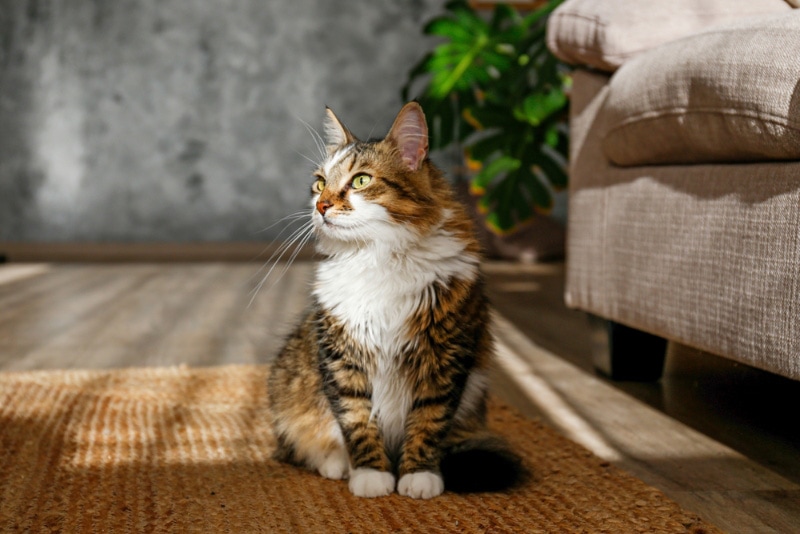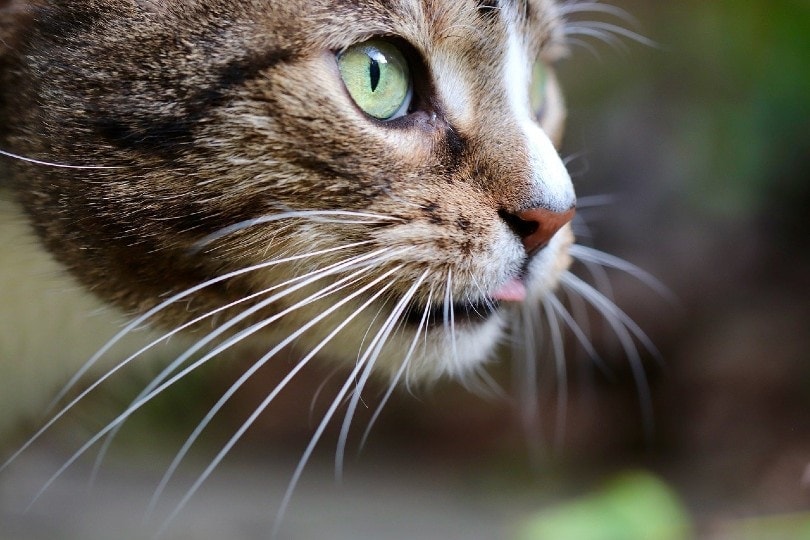Grey Sphynx Cat: Facts, Origin & History (With Pictures)
Updated on
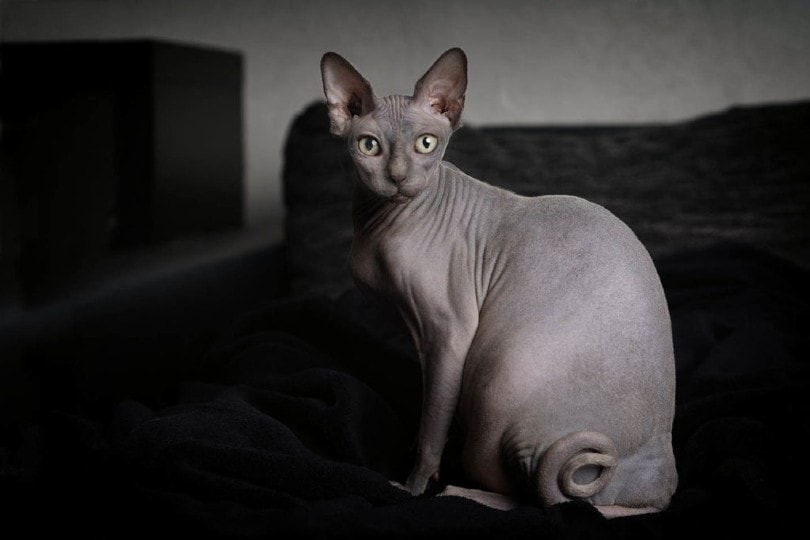
Out of all the cat breeds out there, the Sphynx is probably one of the most recognizable. While there are actually a few hairless breeds, the Sphynx is absolutely the most popular one in the West.
The hairless gene has randomly popped up in cats throughout history. In the 1960s, a breeder decided that they wanted to make a hairless cat breed. To accomplish this, they collected cats with random mutations from various locations throughout North America. By breeding these cats together, they created a new breed that is always hairless.
Because a huge range of cats was used to make this breed, they come in many different colors. One of these colors is grey. In general, all colors are recognized. However, grey is a bit rarer. The “blue” color actually looks quite grey, but typically, when people call a cat “grey,” they mean solid grey. However, this cat can also be a tabby or have other patterns.
Origins & History
Hairless breeds have appeared throughout history. This is how we have gotten breeds like the Peterbald and the Donskoy. However, none of these cats are actually related to each other. Instead, the gene appears to be a random mutation that spontaneously appears in some kittens. It makes it so that their fur does not grow correctly, which causes it to fall out before it grows into more than peach fuzz.
The Sphynx cat was developed through the use of multiple unrelated cats that appeared throughout North America in the 1960s and 1970s. The breed was started by a kitten named Prune that was born in 1966. This cat was then “backcrossed” (bred with its mother) to produce another hairless kitten. Later, three more hairless kittens were found in Toronto and added to the breed.
In 1975, more hairless cats appeared in a barn in Minnesota. These cats were purchased by Sphynx breeders and added to the breed.
All of this interbreeding led to quite a few health problems, though. With the inclusion of other cats and very careful breeding, the Sphynx was eventually turned into a healthier cat breed. Today, they do not have quite as many health problems as they once did.
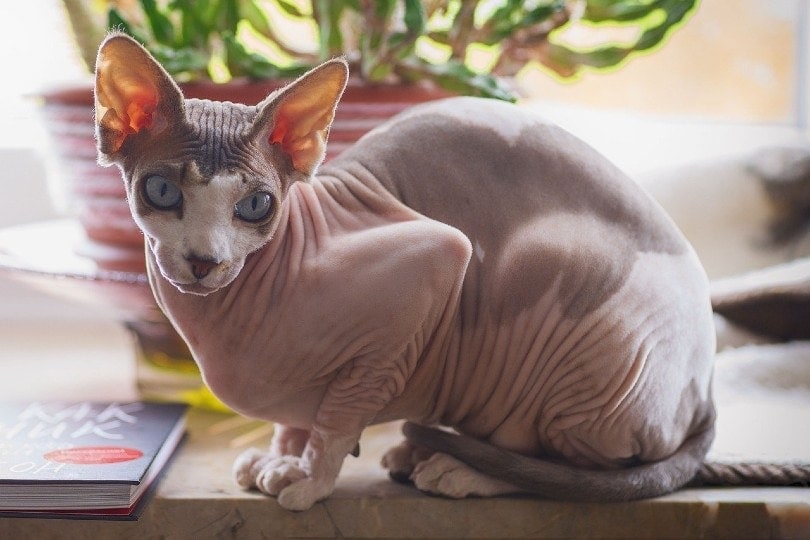
Top 3 Facts About the Grey Sphynx
1. They actually do have hair.
These cats are not technically hairless. They still have all the genetics that make them grow their hair. However, their genetic mutation makes the hair very thin and weak. Therefore, it falls out soon after they grow it. This makes them have basically no hair, though most of them have a bit of peach fuzz. Some will have tufts of fur on their tail.
2. Sphynx are technically warmer than most cats.
In general, this breed runs four degrees warmer than your average feline. This is likely because their body has to produce more heat to keep them at a similar temperature since they don’t have fur keeping their heat closer to their body.
3. They need regular baths.
While you obviously don’t have to worry about brushing these cats, you do have to be concerned with a buildup of body oils. While they don’t have fur, they still produce oil as if they did. With no fur to absorb this oil, they can get a greasy film over their body quite easily. To counteract this, you’ll need to bathe them weekly at least.
Their ears also need regular cleaning since they don’t have any hair to block dirt or dead skin cells from going down their ear canal.
Appearance
The most obvious appearance trait these cats have is their hairlessness. When most people think of a Sphynx, the top trait that comes to their mind is the fact that they don’t have hair.
Grey Sphynx, in particular, are a bit complicated. This is largely because what is defined as “grey” is a bit vague. Many people will place anything grey in the “blue” category, even if there is no blue tint. This is commonly the official designation as well, so “grey” Sphynx technically doesn’t exist. However, some of these cats are obviously grey, especially to the untrained eye.
Besides their hairlessness, these cats have wedge-shaped heads and lemon-shaped eyes. Their eyes are quite large for the shape and size of their head. Their paw pads are a bit thicker than most cats, and their lack of fur makes their pads a bit more prominent than most breeds.
Their tail is often whip-like. It may have fur on it, though the amount can vary greatly between cats. Some have no fur on their tail at all, while others have a tail that is completely covered in fur.
Generally, they are quite muscular. However, they are not stocky. Instead, they have sleek, lean muscles.
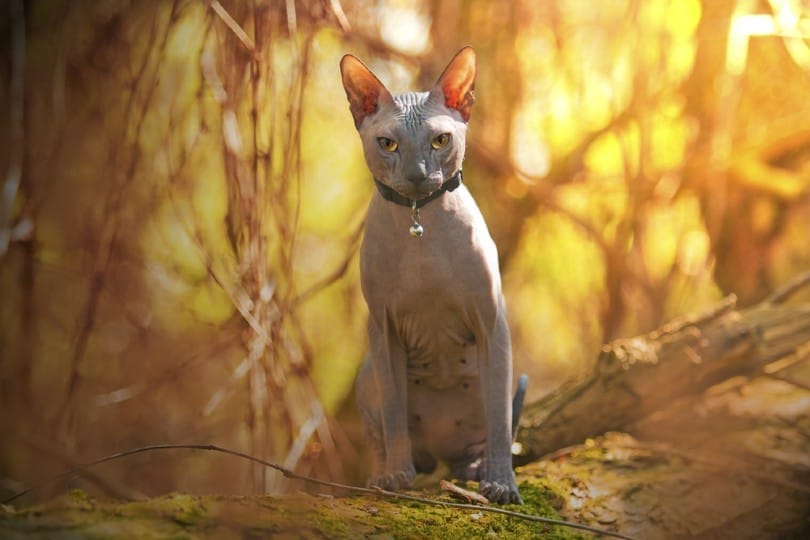
- Related Read: Are Sphynx Cats Hypoallergenic?
Where to Buy
There are many breeders that specialize in this breed. You often won’t find them at animal shelters or rescues, as they aren’t terribly common.
It is important to note that many breeders will sell grey cats as “blue” cats. This is simply the official designation of the breed, not a particular comment on their coloration.
These cats are often expensive, even when compared to other purebred cats. This is due to the amount of work that goes into grooming them. Imagine trying to bathe multiple cats a week. They often require quite a bit of genetic testing, as they are prone to a few health problems.
Conclusion
The grey Sphynx is not rare by any means, though many people will sell them as “blue” – not grey. This is simply the official designation for their grey-ish color, even if it isn’t exactly blue.
If you’re looking for a unique cat, this is absolutely the breed for you. However, be aware of their unique care needs before making an adoption. These cats may not need to be brushed, but they do require a high amount of care. They are not low-maintenance simply because they lack fur.
Related Reads:
Featured Image Credit: Lightspruch, Shutterstock



